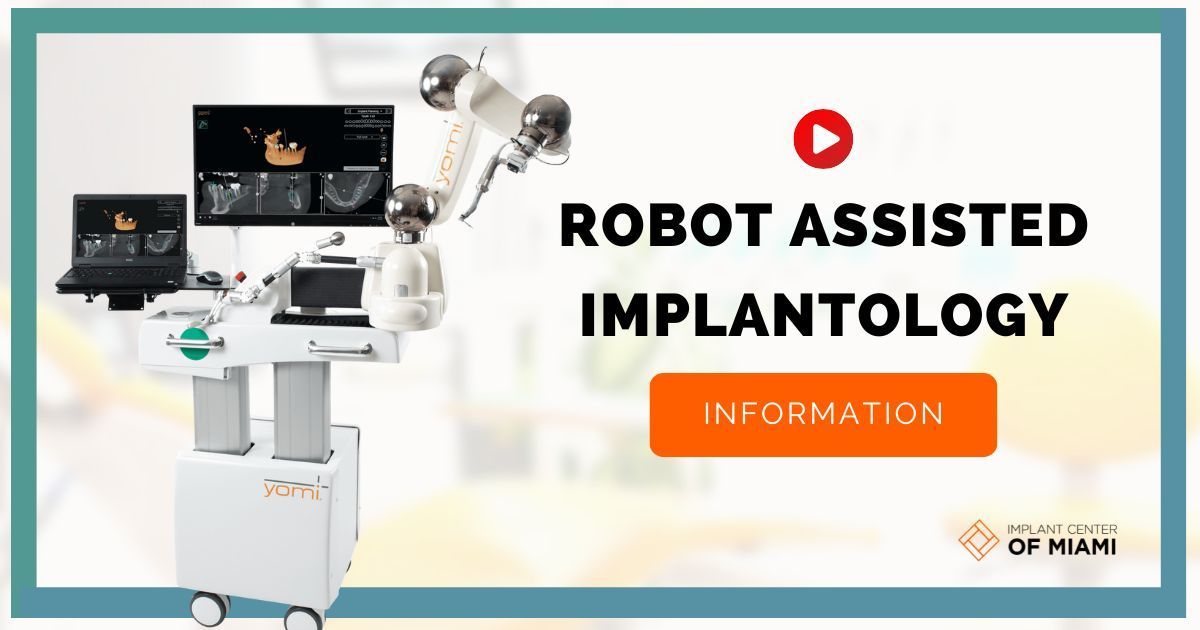Advanced Applications: 3D Printed Implant Procedures with Precision Surgical Guides
3D printed implant surgical guides introduce cutting-edge technology into the conventional healthcare practice, transforming the medical landscape. By using 3D printing technology, these implant surgical guides are perfectly tailored to the patient's physiology, resulting in more accurate implant positioning during surgical procedures. This advancement in technology leads to improved operation efficiency, reduced recovery time, and an elevated level of precision in surgical outcomes, making 3D printed implant surgical guides essential in modern healthcare.
Request an Appointment
The Revolution of 3D Printed Implant Surgical Guides
3D printed implant surgical guides revolutionize medicine by providing unprecedented precision in surgeries. These custom-made guides, from patient specific imaging, enhance the accuracy of implant placement, lessen surgical time, and reduce patient's trauma and recovery period.
An Overview of 3D Printing Technology in Implant Surgery
3D printing technology is revolutionizing implant surgery by enabling bespoke solutions tailored to patient needs. The tech provides precision in constructing artificial parts for patients, with the likes of biocompatible metals, ceramics, and polymers. Evolving patient-specific implants and surgical planning result in better fit, functionality, and improved recovery times.
The Role of 3D Printed Surgical Guides in Dental Implants
3D printed surgical guides are vital in dental implants as they ensure precision and increase safety. By providing a customized fit and accurate placement, they minimize surgical errors and patient discomfort. They also contribute to faster recovery by reducing surgery time.
Medical Advances: The Use of 3D Printing in Orthopedic Implants
3D printing revolutionizes orthopedics by creating personalized implants, improving patient recovery. It tailors implants to individual anatomical needs, optimizes fit, and enhances efficacy. Furthermore, 3D printing enables bio-printing, potentially generating bone grafts.
The Process of Creating a 3D Printed Implant Surgical Guide
The process of creating a 3D printed implant surgical guide begins with capturing a patient's unique anatomy using CT or MRI scans. These digital images are processed using computer-aided design to create a precise 3D model of the area requiring surgery. The model is then converted into a printable file, and a 3D printer uses biocompatible material to produce the patient-specific surgical guide. This guide assists the surgeon in correctly positioning the implant, enhancing surgical accuracy.
Advantages of Using 3D Printed Surgical Guides in Implant Surgery
3D printed surgical guides in implant surgery offer accuracy, customization, & efficiency. They enable precise implant placement based on a patient's unique anatomy, reducing surgical errors. This leads to quicker recovery time, less patient discomfort, and streamlined surgical procedures.
Accuracy and Precision: The Role of 3D Printed Guides in Implant Surgery
3D printed guides greatly enhance accuracy and precision in implant surgery. They provide predefined paths that minimize errors, increasing surgical safety. Customized for each patient, they improve the procedure's predictability and could result in faster recovery times.
Case Study: Successful Surgeries Using 3D Printed Implant Guides
In a breakthrough in the medical field, surgeries are now successfully performed using 3D printed implant guides. This innovative approach offers personalized solutions, improved accuracy, and shorter operation times. The case studies highlight significant reduction in operative complications, showcasing the potential that 3D printed implant guides hold for reshaping surgery protocols.
How 3D Printed Surgical Guides are Aiding Patient-Specific Surgeries
3D printed surgical guides aid patient-specific surgeries by enabling precise surgical planning. They're custom-made for each patient, improving surgical outcomes and reducing risks. Physicians can visualize the surgical process beforehand, enhancing speed and efficiency during the actual procedure.
Reducing Surgical Risks with 3D Printed Implant Guides
3D printed implant guides contribute significantly to reducing surgical risks. These patient-specific tools improve the accuracy of surgical procedures, leading to decreased operation times and improved surgical outcomes. They represent a leap forward in advanced healthcare.
Economic Impact of 3D Printed Surgical Guides in Implant Surgery
3D-printed surgical guides in implant surgery significantly impact economics. They enhance precision, reduce surgery time, and minimize recovery duration, saving healthcare costs. Furthermore, they secure patient safety and comfort—these factors can lead to higher satisfaction rates, potentially increasing demand for such services.
Environmental Implications of 3D Printing in Implant Surgical Guides
3D printing in implant surgical guides has significant environmental implications. It reduces waste by using precise quantities of material and eliminating the need for casting molds. However, it also poses challenges with potential harmful emissions and disposal of non-biodegradable printed products.
Future Predictions: The Role of 3D Printed Guides in Robotic Surgery
3D printed guides hold a tremendous role in the future of robotic surgery. They will increase precision levels, minimize human error and recovery time. Doctors can use these guides for operative planning, enhancing surgical efficiency. The integration of 3D printing with robotics signifies a leap in medical advancement.
The Challenge and Solution of Training Surgeons for 3D Implant Guides
Training surgeons for 3D implant guides presents a significant challenge due to the complex spatial cognition needed. It requires integrating traditional surgical skills with advanced technology. The solution lies in comprehensive training programs which blend surgical practice with 3D technology learning, effectively bridging the gap between theory and practice.
Critical Review of the Application of 3D Print Technology in Implant Surgeries
3D print technology in implant surgeries has revolutionized the healthcare industry. It allows for personalized implants, improving patient outcomes and surgical precision. Despite its benefits, challenges such as high cost, regulation issues and the need for specialized training for operators can't be ignored. Thus, while promising, a comprehensive approach to address these challenges is needed to fully harness its potential.
Transforming Neurosurgery: The Use of 3D Printed Implant Guides
Transforming Neurosurgery: The use of 3D printed implant guides is revolutionizing neurosurgical procedures. 3D printing technology is enabling precision and personalization, reducing risks and operation times. By using patient's MRI or CT scan data, a personalized 3D implant guide is printed, enhancing the surgeon's capability to plan and execute procedures more accurately.
The Integration of 3D Printing and Biomedical Engineering in Implant Surgery
3D printing, combined with biomedical engineering, revolutionizes implant surgeries. It supports the creation of custom implants, improving patient fit and comfort. Furthermore, it enables pre-surgery simulations, reducing surgical complications and recovery time.
Ethical Considerations in the Use of 3D Printed Implant Surgical Guides
Ethical considerations in using 3D printed implant surgical guides involve patient safety, privacy, and informed consent. 3D printing technology can enhance precision but poses risks due to possible printing errors. Maintaining privacy of the patient's biometric data used in the 3D model is crucial. Moreover, patients should be informed about such procedures.
Exploring the Limitations and Challenges of 3D Printed Surgical Guides
3D printed surgical guides offer immense benefits to medical practice, yet are not without flaws. Major challenges include procedural difficulty in creating accurate models and potential inaccuracies during printing. They possess limitations related to inconsistencies in materials used, which can affect durability and sterilization suitability. Ethics surrounding patient consent for use of personal data also pose challenges.
Success Stories: Patients' Experiences with 3D Printed Implant Surgical Guides
3D printed implant surgical guides have been transforming patient experiences, marking numerous success stories. These precision tools aid in customized treatments, enhancing procedural accuracy and reducing recovery time. Patients report less discomfort, quicker healing, and improved outcomes. Truly, 3D technology in healthcare is fueling innovations.
Concluding Remarks: The Future and Impact of 3D Printed Surgical Guides in Implant Surgery
3D printed surgical guides are revolutionizing implant surgery, paving the path for advent precision. The future will likely witness these guides becoming a standard due to their accuracy and the customizability they offer. Also, they reduce surgical time, resulting in improved patient experience. Undeniably, their impact is transformative and far-reaching.
Frequently Asked Questions
Dental Financing Options
Checking your options will not impact your credit score!
Apply Online in 30 Seconds
Fund Your Account
Start Your Treatment
Read Our Blog


Office Locations
Contact Us
For more information or to schedule an appointment, call us at 786-713-9290 or complete the form.
What Happens After I Send My Message?
Implant Center of Miami: Website Message
Locations Information
Our Services
Quick Links
Office Hours
- Mon - Fri
- -
- Sat - Sun
- Closed



